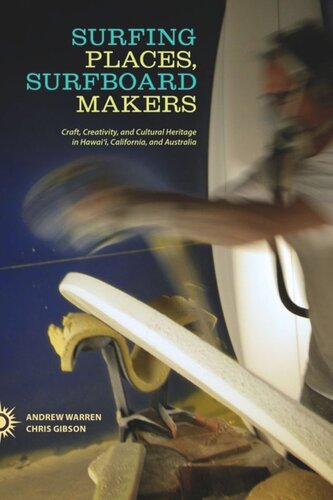

Most ebook files are in PDF format, so you can easily read them using various software such as Foxit Reader or directly on the Google Chrome browser.
Some ebook files are released by publishers in other formats such as .awz, .mobi, .epub, .fb2, etc. You may need to install specific software to read these formats on mobile/PC, such as Calibre.
Please read the tutorial at this link: https://ebookbell.com/faq
We offer FREE conversion to the popular formats you request; however, this may take some time. Therefore, right after payment, please email us, and we will try to provide the service as quickly as possible.
For some exceptional file formats or broken links (if any), please refrain from opening any disputes. Instead, email us first, and we will try to assist within a maximum of 6 hours.
EbookBell Team

0.0
0 reviewsOver the last forty years, surfing has emerged from its Pacific islands origins to become a global industry. Since its beginnings more than a thousand years ago, surfing’s icon has been the surfboard—its essential instrument, the point of physical connection between human and nature, body and wave. To a surfer, a board is more than a piece of equipment; it is a symbol, a physical emblem of cultural, social, and emotional meanings. Based on research in three important surfing locations—Hawai‘i, southern California, and southeastern Australia—this is the first book to trace the surfboard from regional craft tradition to its key role in the billion-dollar surfing business.
The surfboard workshops of Hawai‘i, California, and Australia are much more than sites of surfboard manufacturing. They are hives of creativity where legacies of rich cultural heritage and the local environment combine to produce unique, bold board designs customized to suit prevailing waves. The globalization and corporatization of surfing have presented small, independent board makers with many challenges stemming from the wide availability of cheap, mass-produced boards and the influx of new surfers. The authors follow the story of board makers who have survived these challenges and stayed true to their calling by keeping the mythology and creativity of board making alive. In addition, they explore the heritage of the craft, the secrets of custom board production, the role of local geography in shaping board styles, and the survival of hand-crafting skills.
From the olo boards of ancient Hawaiian kahuna to the high-tech designs that represent the current state of the industry, Surfing Places, Surfboard Makers offers an entrée into the world of surfboard making that will find an eager audience among researchers and students of Pacific culture, history, geography, and economics, as well as surfing enthusiasts.